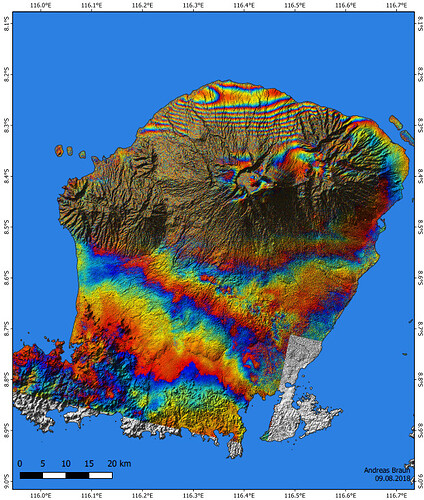to me good interferograms
- do not contain noise areas due to decorrelation
- have clear patterns related to either surface changes or topography
- in case of DInSAR: do not contain variation caused from atmosphere
Let’s take this as an example: The patterns clearly indicate surface chages in the earthquake area, but do not show larger variations outside
In contrast, this one has clear fringes outside the volcano, but is decorrelated at the slope areas - the information is not usable here.
If your study area is desert, there should be a way to have clear interferograms.

